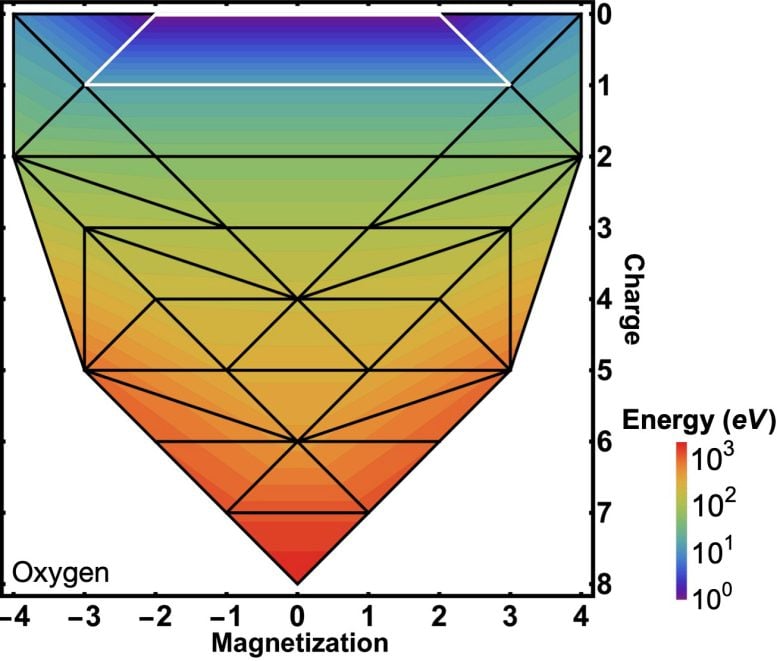A team of physicists from Trinity College Dublin has developed a new quantum mechanics theorem that improves understanding of the energy landscape of quantum particles. Their work could lead to more accurate simulations and advances in green technology materials.
Physicists at Trinity College Dublin have made advances in quantum mechanics, enabling better simulations and potential breakthroughs in green technology.
By understanding the exact energy landscape of quantum particles, Accuracy Computer simulation research for materials science. These simulations aid in the development of advanced materials with applications in physics, chemistry, and sustainable technology. This research addresses long-standing questions from the 1980s and paves the way for breakthroughs in various scientific fields.
Led by an international group of physicists and researchers Trinity College Dublinhave developed a new theorem of quantum mechanics that describes the “energy landscape” of a ensemble of quantum particles. Their work resolves a decades-old question and paves the way for more accurate computer simulations of materials. The advance could greatly help scientists designing materials that will revolutionize green technology.
The new theorem has just been published in a prestigious journal. Physics Review LetterThe results explain how the energy of particle systems (including atoms, molecules and more exotic materials) changes when magnetism and the number of particles are changed. This solves an important open question for the simulation of matter using computers and extends a series of groundbreaking research that began in the early 1980s.
The work, which combines pen-and-paper calculations, was carried out by Andrew Burgess, a PhD student in Trinity’s Department of Physics, Dr Edward Linscott from the Paul Scherrer Institute in Switzerland, and Dr David O’Regan, Associate Professor of Physics at Trinity.

A precise diagram of the energy landscape of oxygen atoms, which take the form of tiled valleys, as described by quantum mechanical theory. Courtesy of Dr David O’Regan, Trinity College Dublin.
The role of computer simulation in materials science
The use of computer simulations to explore and understand molecules and materials is a mature and active field of research. It has a decades-long track record of success, and several materials in use today were developed with the help of such simulations. When studying atomic-level systems, the equations that describe the particles and their interactions are the equations of quantum mechanics.
These equations are very demanding and must be approximated in any real simulation, and techniques to make such approximations more reliable while keeping computational costs manageable are approaching 100%.Number This research is increasingly guided by clear rules from quantum theory, i.e. some known “exact conditions”, such as those found here.

Dr David O’Regan and Andrew Burgess discuss their work at Trinity College Dublin. Photo by Dr David O’Regan, Trinity College Dublin.
On how to visualise the team’s discovery, Dr David O’Regan explains: “Imagine a steep-sided valley. The ground is not curved, but made up of angular tiles, like in old arcade games where images are created using polygons.”
“We found that the height profile of such a fractured valley accurately represents the energy of a collection of isolated particles, such as molecules. Going straight up the valley corresponds to a change in the number of electrons holding the molecule together, while moving to either side increases magnetism. Our work has allowed us to map this valley up to a highly magnetic state, showing that the valley walls are steeply sloping.”
Insights into quantum mechanics theorems
Lead author Andrew Burgess details how this discovery came about: “While working on a different problem, I needed to know the shape of this energy valley in a simple system. I looked through published research and found lots of nice graphs, but to my surprise, no one went so far as to map out the entire valley. I realised that the existing theorems of quantum mechanics could also be used for systems with one electron, such as hydrogen. atomBut for systems with two electrons, such as helium atoms, these theorems told us almost nothing about the sides of the valley. In particular, a quantum mechanical theorem known as the spin invariance condition was incomplete.”
Explaining the significance of his team’s findings, Dr Edward Linscott from PSI’s Materials Simulation Laboratory added: “Understanding the geography of this energy landscape may seem very abstract and esoteric, but in reality, this knowledge can help us solve all kinds of real-world problems. When our colleagues use computer simulations to try to find the next generation of materials for more efficient solar panels or more energy-efficient catalysts for industrial chemistry, they can incorporate our knowledge of the energy landscape into the calculations they perform, improving the accuracy and reliability of their predictions.”
Dr O’Regan added: “The energy differences and slope of the valley’s topography underlie material stability, material-light interactions, chemical reactions and magnetic effects. Knowing what the entire valley surface looks like, including its highly magnetized nature, is already helping us build better tools to simulate complex non-magnetic materials.”
“The motivation for this work is the need to improve simulation theory and methods for materials development for renewable energy and chemical applications. For example, when a battery discharges, the particle number and magnetism of metal atoms change. Here we see that we are moving through the same valley – a drop in height, so to speak – that produces the energy that the battery provides. This is an example of applied simulation and abstract quantum theory in parallel practice, each motivating and improving the other.”
Reflecting on the nature of this type of research, Burgess added: “The interplay between theory and practical simulation is what I like most about this field of research. We’ve already developed new ways to model materials based on these theorems and are testing them on battery cathode materials, so there’s a lot of exciting research in the pipeline.”
Reference: “Slope structure of energy in finite quantum systems” by Andrew C. Burgess, Edward Linscott, and David D. O’Regan, July 12, 2024, Physics Review Letter.
DOI: 10.1103/PhysRevLett.133.026404
The research was funded by the Irish Research Council and the Swiss National Science Foundation.


